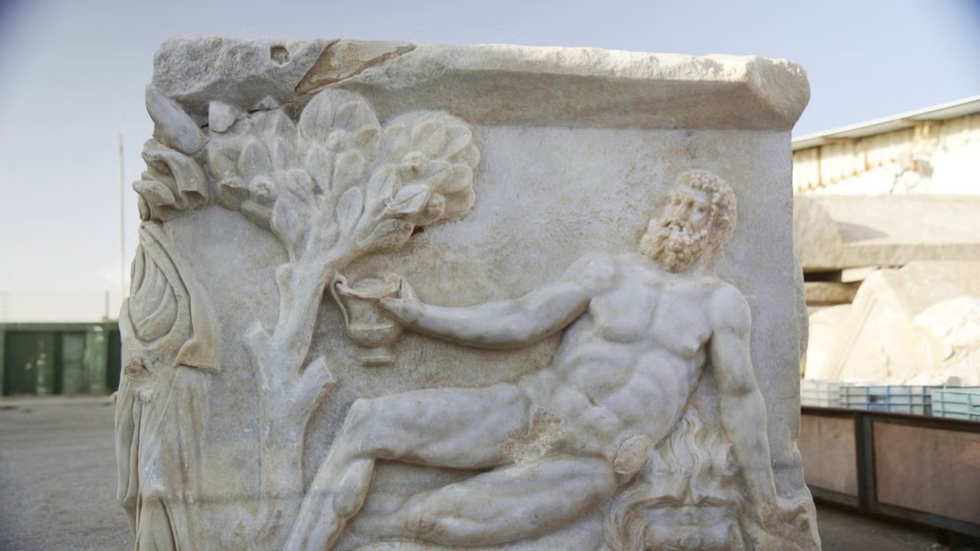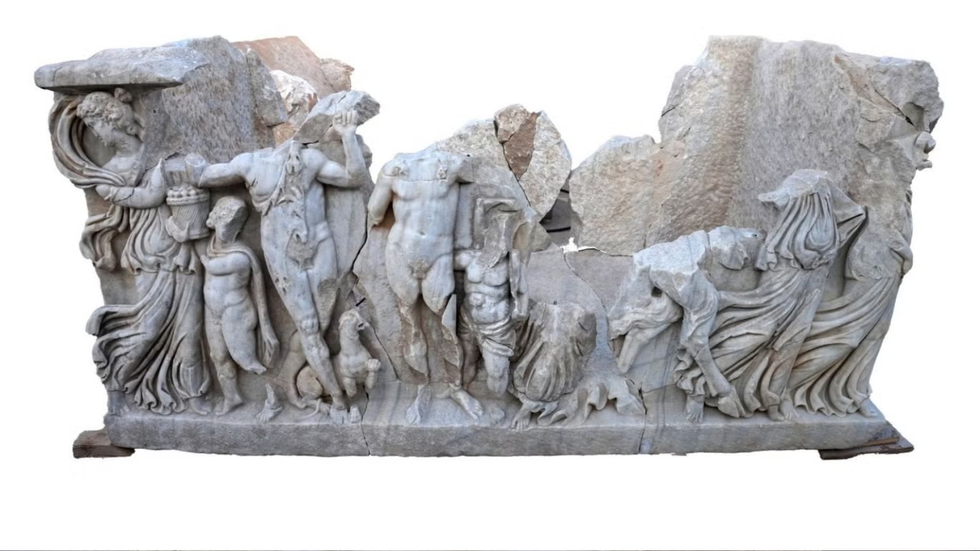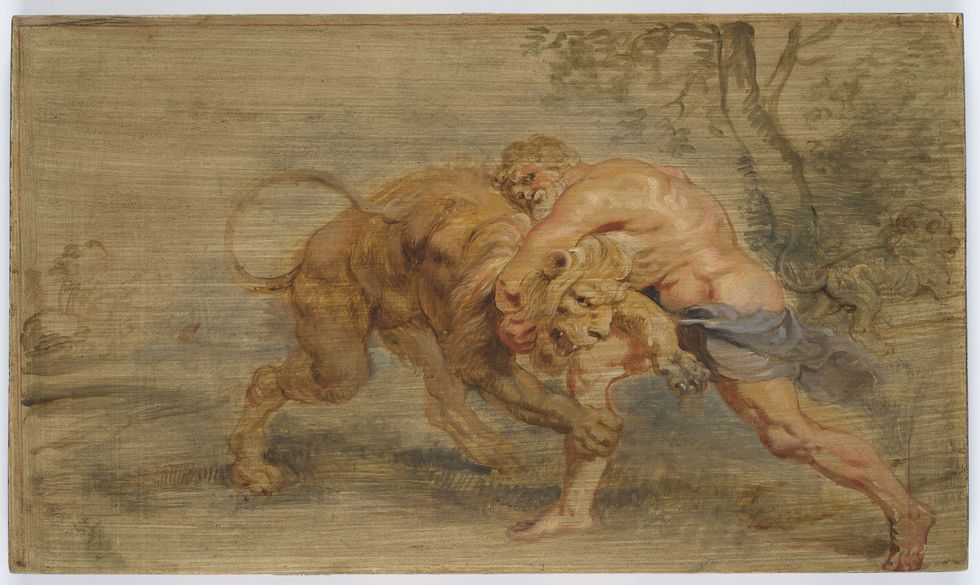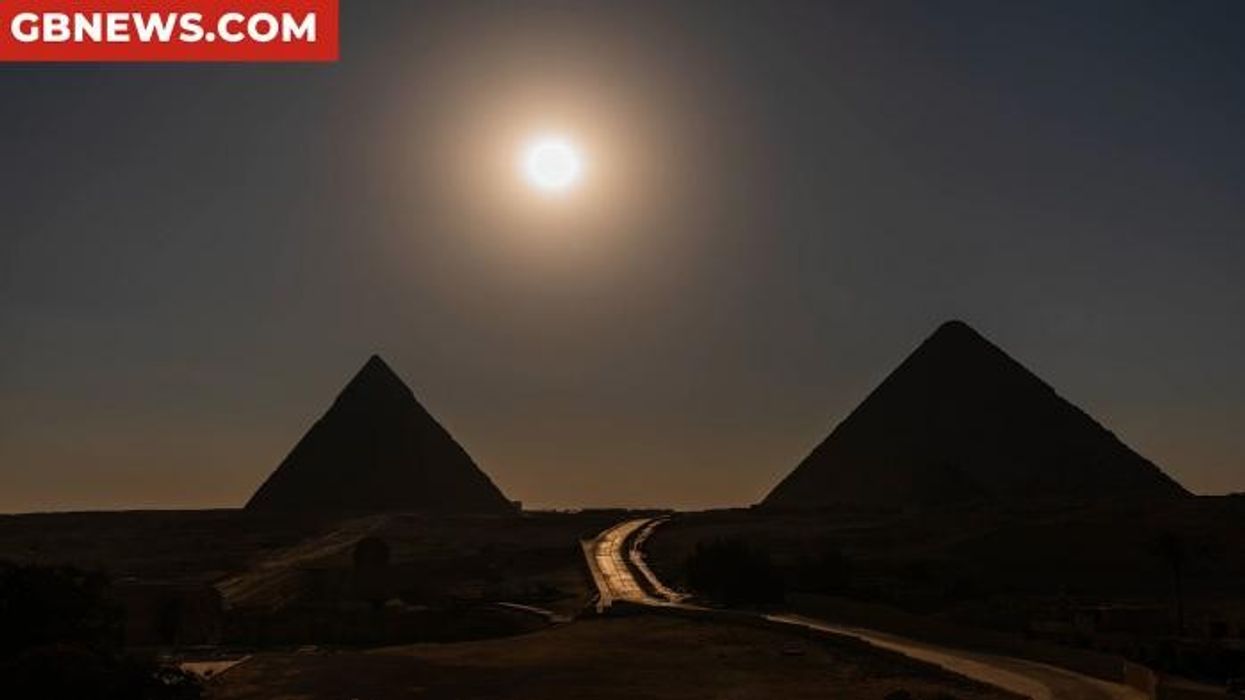Archaeology breakthrough as 1,700-year-old sarcophagus featuring Greek gods in drinking competition discovered

'This sarcophagus offers an unusual perspective of the idea of death - not as an end, but as the beginning of a new path,' researchers said
Don't Miss
Most Read
Israeli archaeologists have discovered a remarkable 1,700-year-old marble sarcophagus featuring a rare depiction of Greek gods Hercules and Dionysus engaged in a drinking contest.
The Roman-era artefact, dating to the second or third century AD, was unearthed during ongoing excavations near the Mediterranean coastal site.
The find, in an area outside the ancient city walls of Caesarea, indicates the city was likely densely populated during the Roman period.
The sarcophagus displays intricate carvings of animals, trees and the two deities, offering unprecedented insights into ancient regional beliefs about death and the afterlife.

Researchers made the find in an area outside the ancient city walls of Caesarea - one side shows Hercules lying on the skin of the Nemean Lion
|ISRAEL ANTIQUITIES AUTHORITY
The artwork reveals Hercules in an unusual state of defeat, depicted "as someone who is no longer able to stand", clearly showing the outcome of the drinking competition with Dionysus, the god of wine and revelry.
"This is the very first time we find the Dionysus and Hercules wine competition scene on a burial coffin in our region," Nohar Shahar and Shani Amit from the Israel Antiquities Authority said in a statement.
The demigod of strength is shown reclining on a lion's skin, cup in hand, in what archaeologists describe as a unique regional interpretation of the scene.
While drinking contest themes appear in Roman mosaics from other Israeli sites like Zippori and Antioch, this specific funerary depiction represents an extraordinary discovery for the area.
MORE REMARKABLE FINDS IN THE HOLY LAND:

PICTURED: The remarkable 1,700-year-old marble sarcophagus featuring a rare depiction of Greek gods Hercules and Dionysus engaged in a drinking contest
|ISRAEL ANTIQUITIES AUTHORITY
"We began removing the soft, light sand of the dune when suddenly the tip of a marble object popped up," Shahar and Amit said.
"The entire excavation team stood around excitedly and as we cleared more sand, we couldn't believe what we were seeing."
The sarcophagus emerged in fragments, each piece more remarkable than the last.
"In fact, in the very last hour of the excavation came the climax - an entire intact side of the sarcophagus, which was buried in the sand, was uncovered, which portrays the scene of Hercules lying on a lion's skin, holding a cup in his hand," they said.
Conservators are now working to restore and reassemble the broken pieces.
The imagery carries profound symbolic meaning beyond mere celebration.
LATEST ARCHAEOLOGY UPDATES FROM GB NEWS:

The sarcophagus showed Hercules lying on the skin of the Nemean Lion - his fight with the beast is depicted in this oil sketch by Rubens
|HARVARD ART MUSEUMS
"In this case, it seems that the figures are not only celebrating," Shahar explained.
"They are in fact accompanying the dead on his last journey, when drinking and dancing are transformed into a symbol of liberation and transition to life in the next world.
"This sarcophagus offers an unusual perspective of the idea of death - not as an end, but as the beginning of a new path."
Israel Antiquities Authority director Eli Escusido called the find "thought-provoking" and said it shed light on Roman-era beliefs and daily life.











